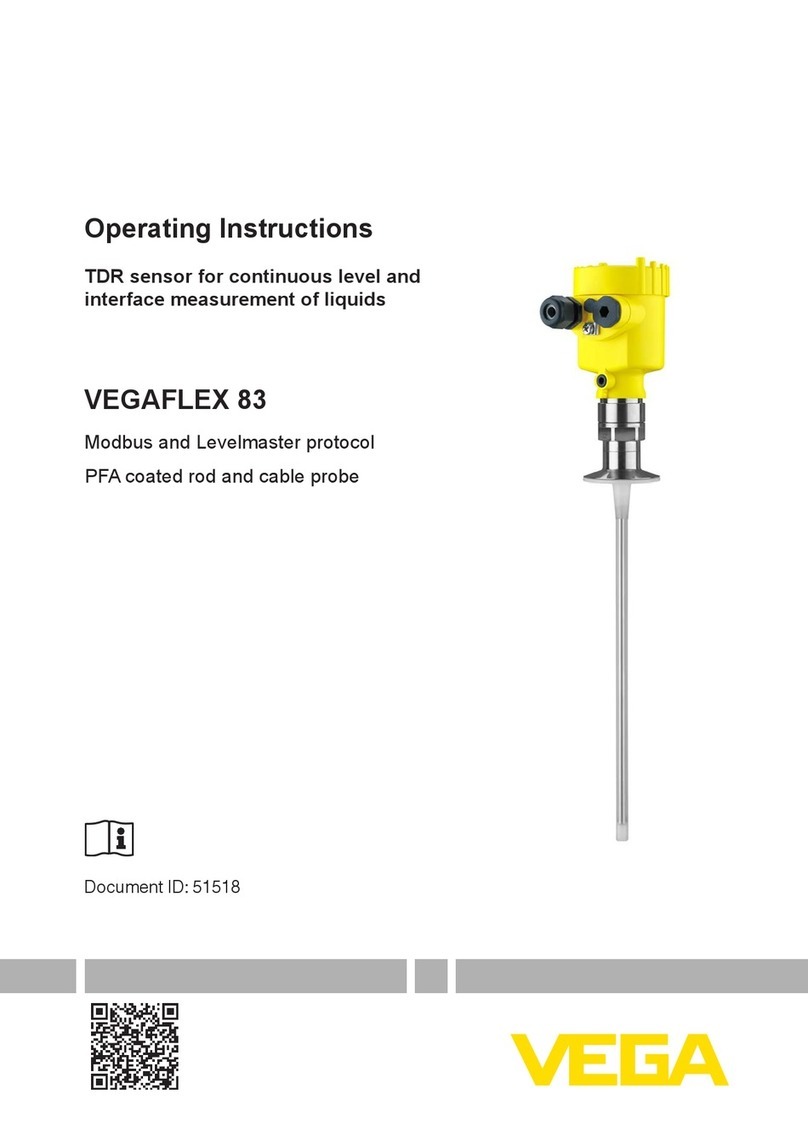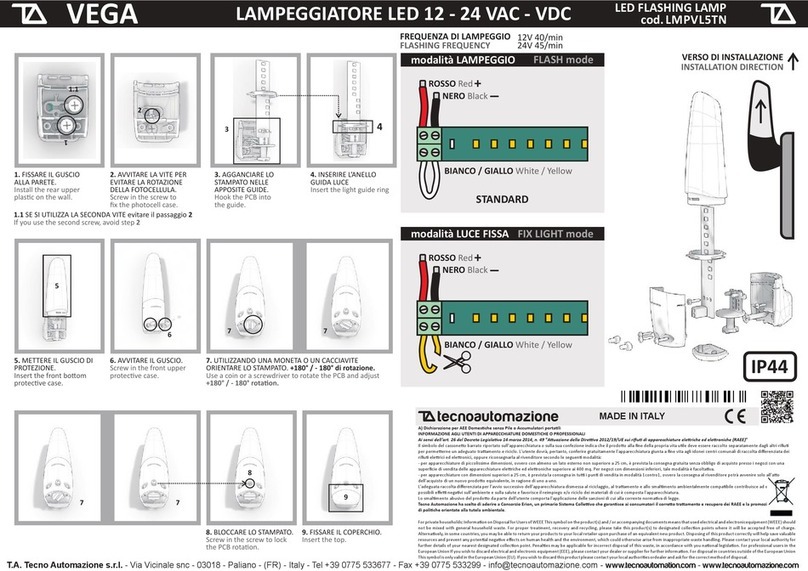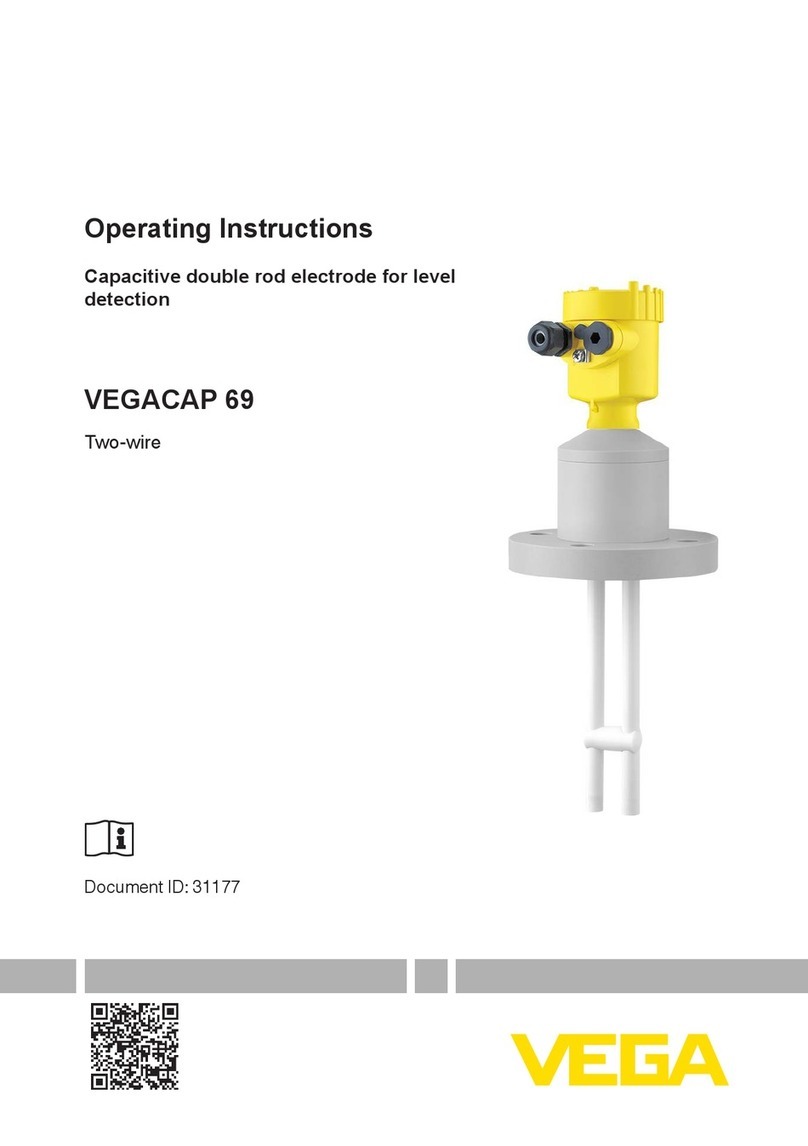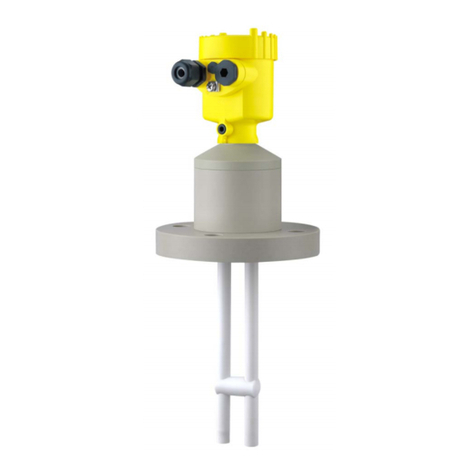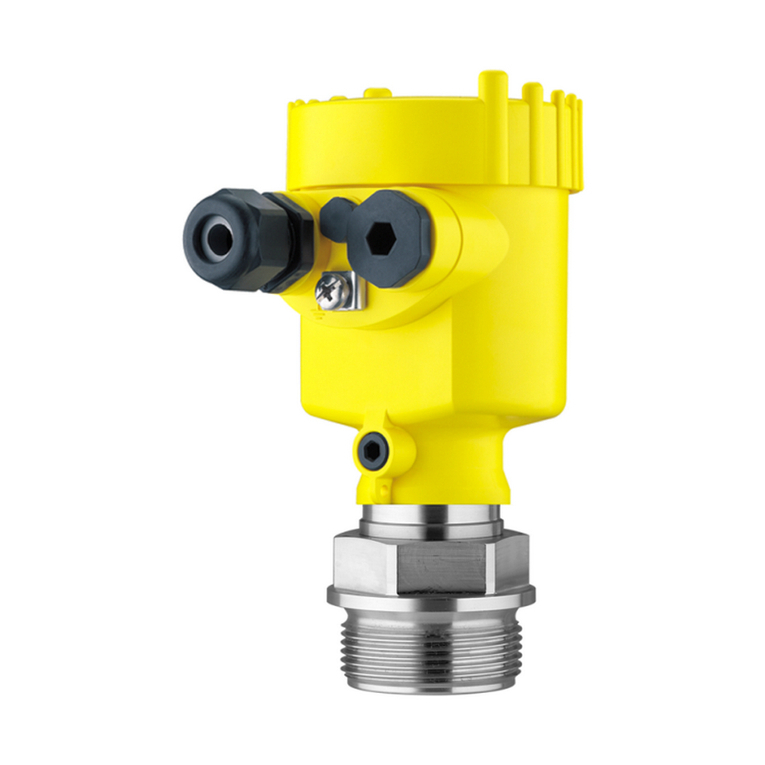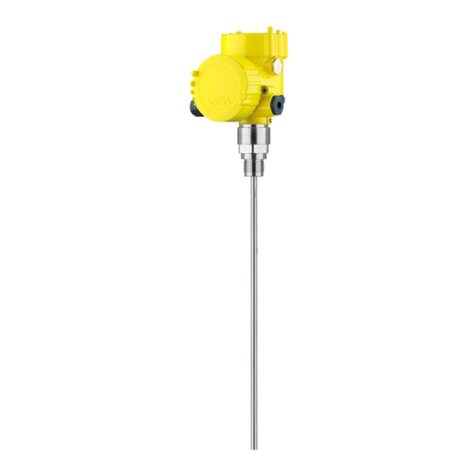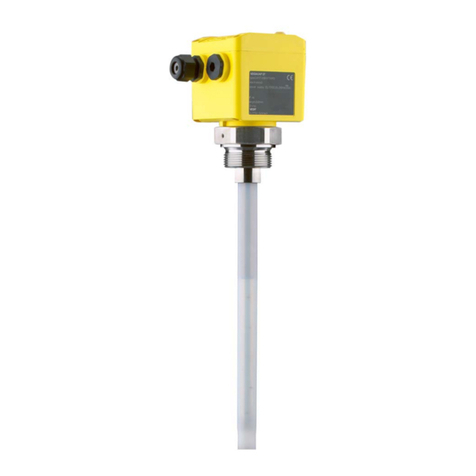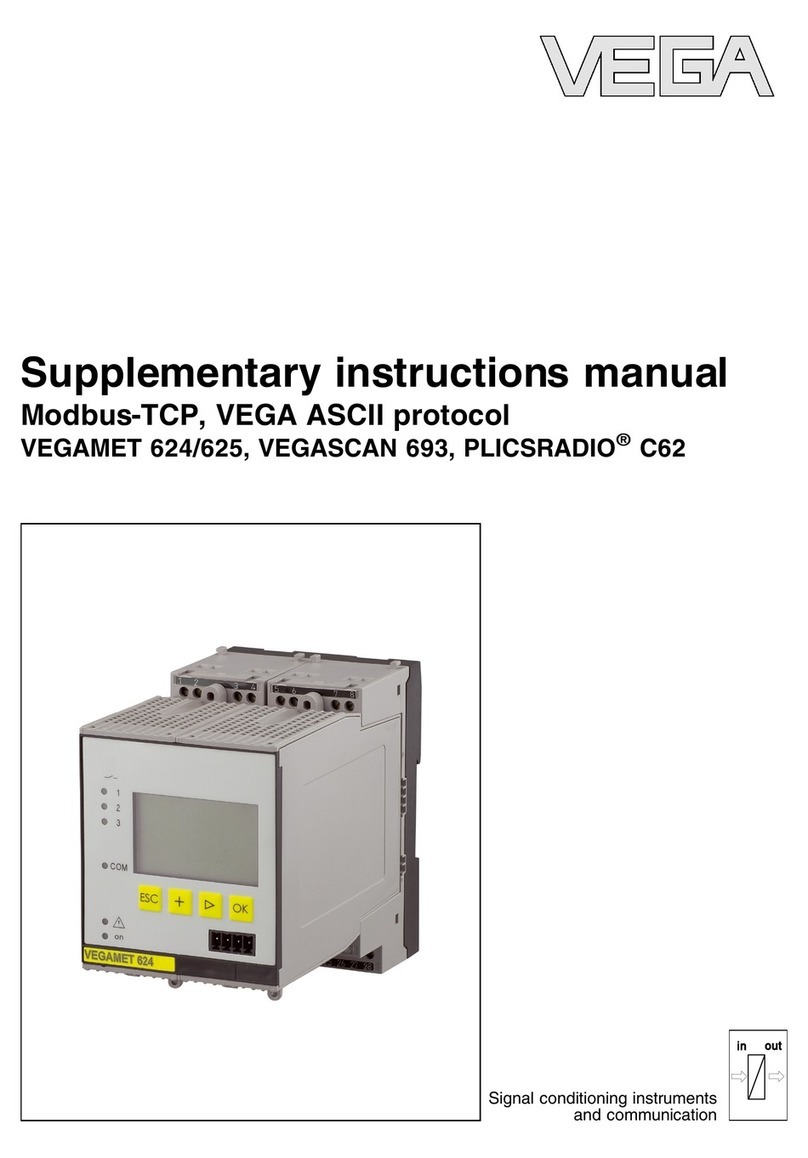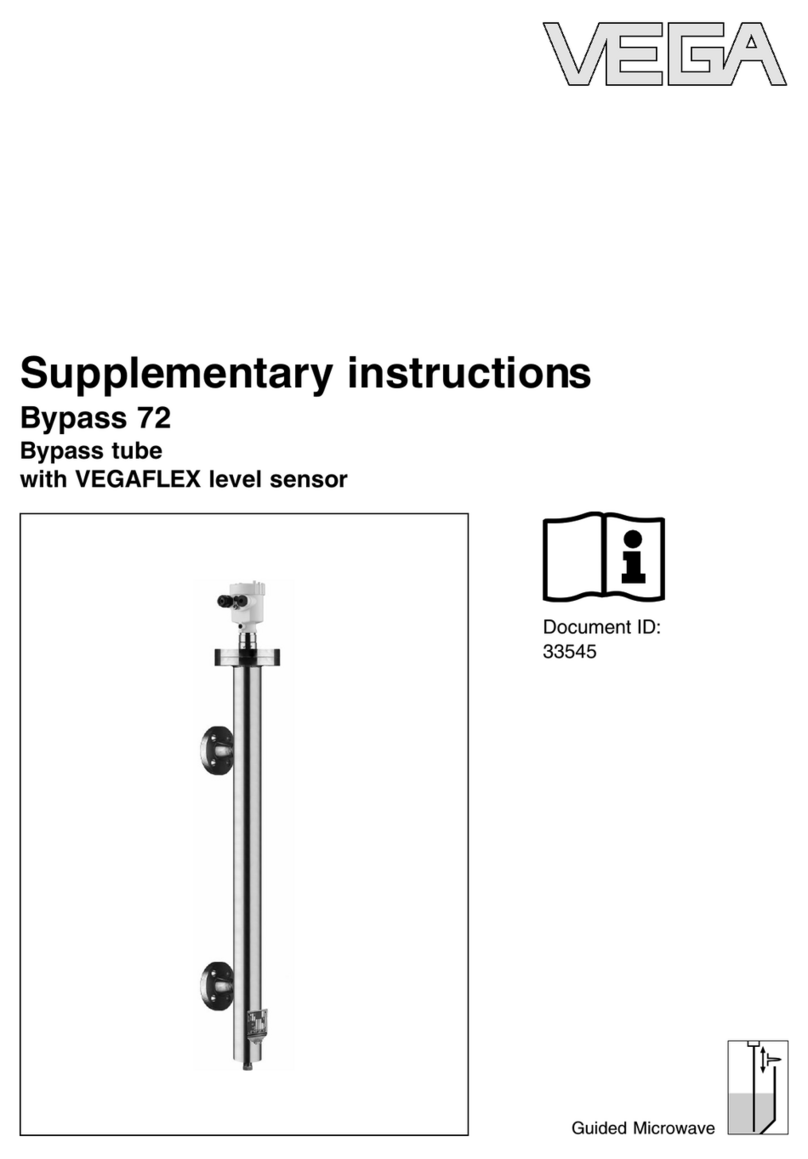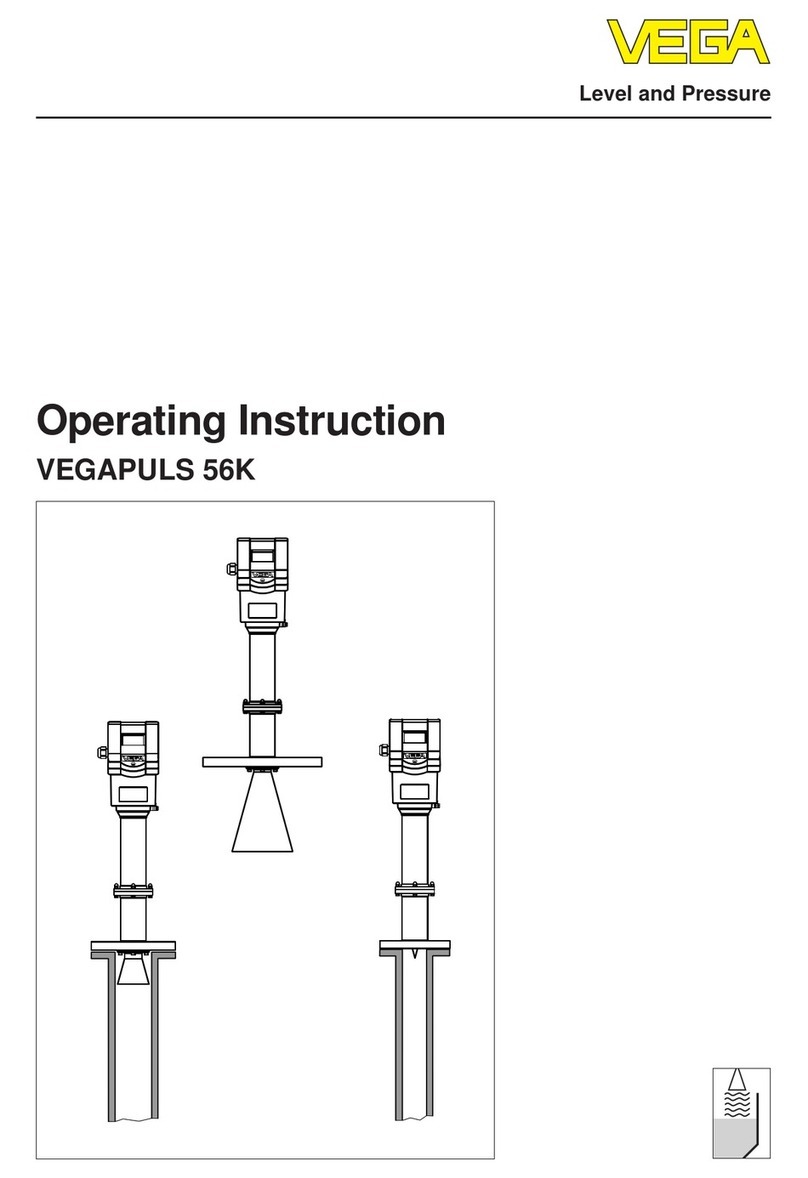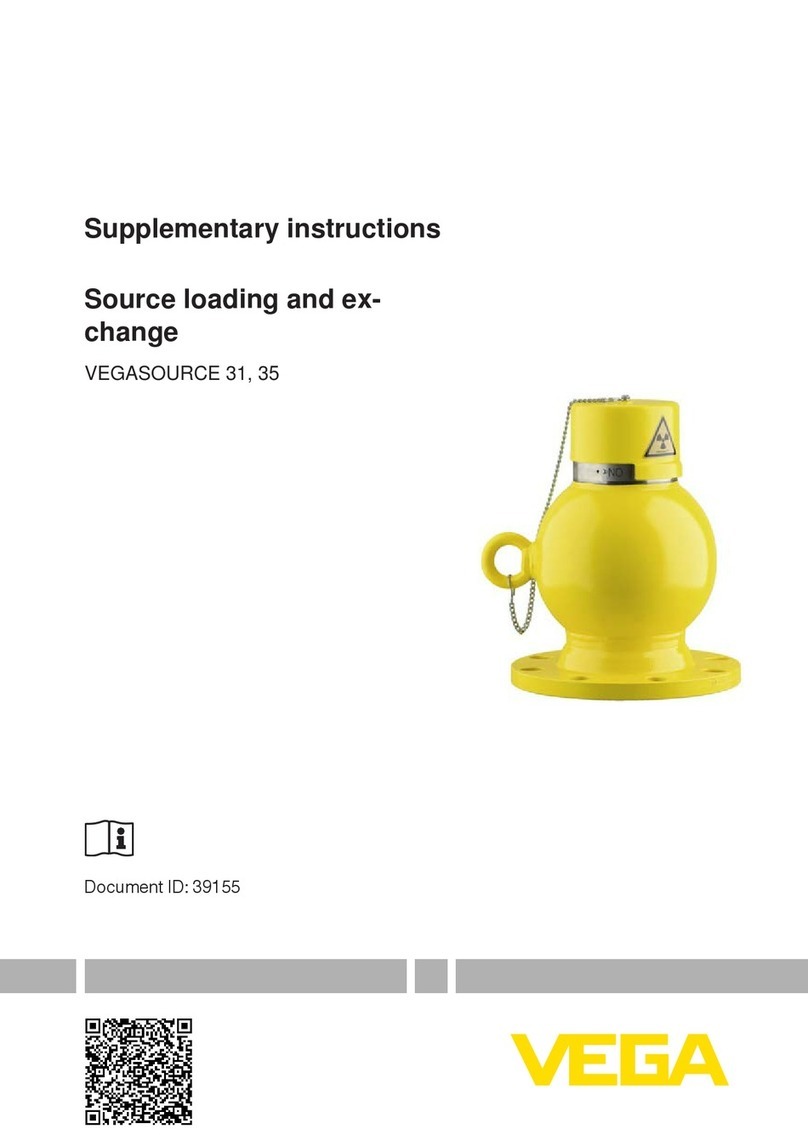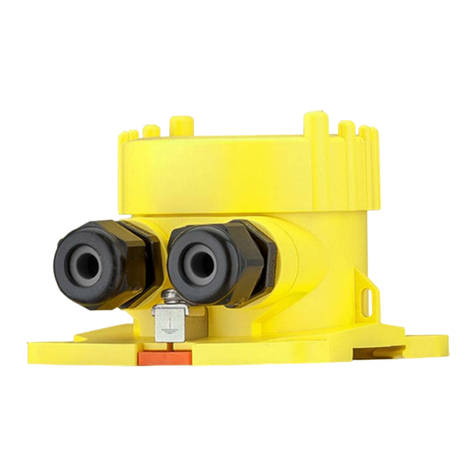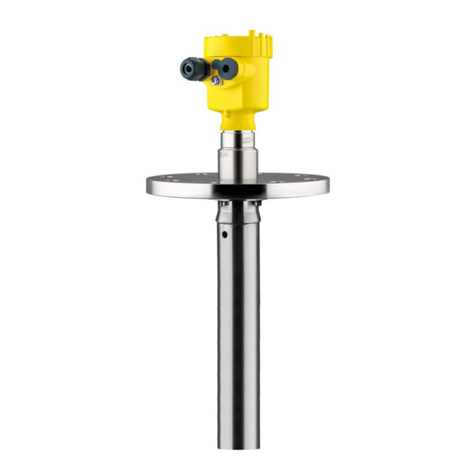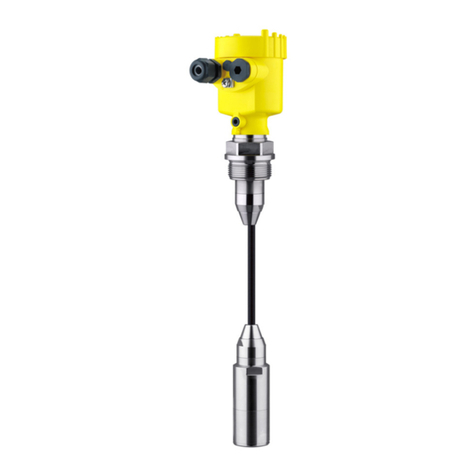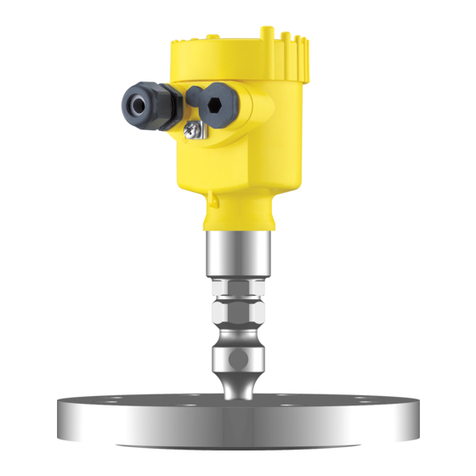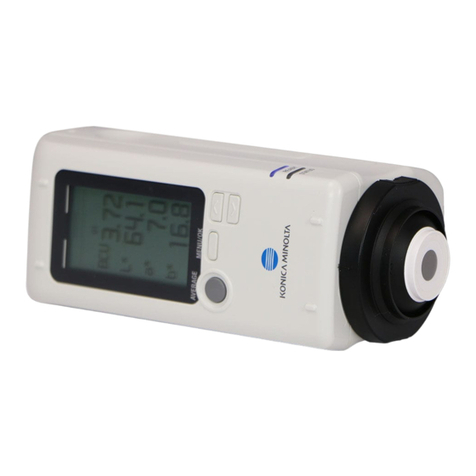
2
Contents
VEGATOR 112 •
46106-EN-140625
Contents
1 About this document
1.1 Function ........................................................................................................................... 4
1.2 Target group ..................................................................................................................... 4
1.3 Symbols used................................................................................................................... 4
2 For your safety
2.1 Authorised personnel ....................................................................................................... 5
2.2 Appropriate use................................................................................................................ 5
2.3 Warning about incorrect use............................................................................................. 5
2.4 General safety instructions............................................................................................... 5
2.5 CE conformity................................................................................................................... 6
2.6 Safety label on the instrument .......................................................................................... 6
2.7 SIL conformity (optional) .................................................................................................. 6
2.8 Safety instructions for Ex areas ........................................................................................ 6
2.9 Environmental instructions ............................................................................................... 6
3 Product description
3.1 Conguration.................................................................................................................... 7
3.2 Principle of operation........................................................................................................ 7
3.3 Operation ......................................................................................................................... 8
3.4 Packaging, transport and storage..................................................................................... 8
4 Mounting
4.1 Mounting instructions ....................................................................................................... 9
5 Connecting to power supply
5.1 Preparing the connection ............................................................................................... 10
5.2 Connection procedure.................................................................................................... 10
5.3 Wiring plan ..................................................................................................................... 11
6 Setup
6.1 Adjustment system......................................................................................................... 12
6.2 Adjustment elements...................................................................................................... 12
6.3 Function chart "Point level"............................................................................................. 15
6.4 Function chart, two-point control .................................................................................... 15
7 Maintenanceandfaultrectication
7.1 Maintenance .................................................................................................................. 18
7.2 Rectify faults................................................................................................................... 18
7.3 How to proceed if a repair is needed.............................................................................. 19
8 Dismount
8.1 Dismounting steps.......................................................................................................... 20
8.2 Disposal ......................................................................................................................... 20
9 Supplement
9.1 Technical data ................................................................................................................ 21
9.2 Dimensions .................................................................................................................... 23
